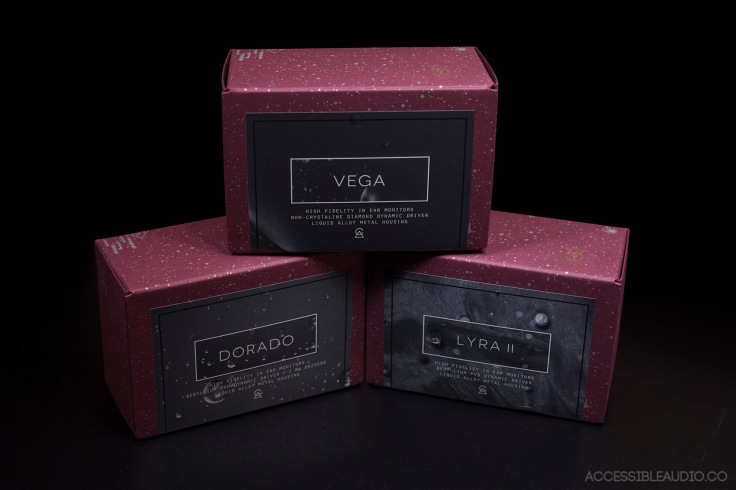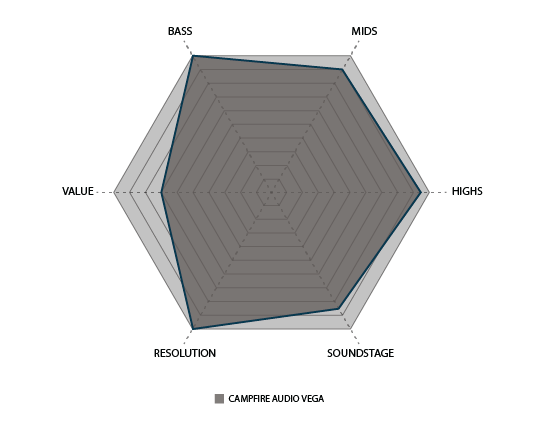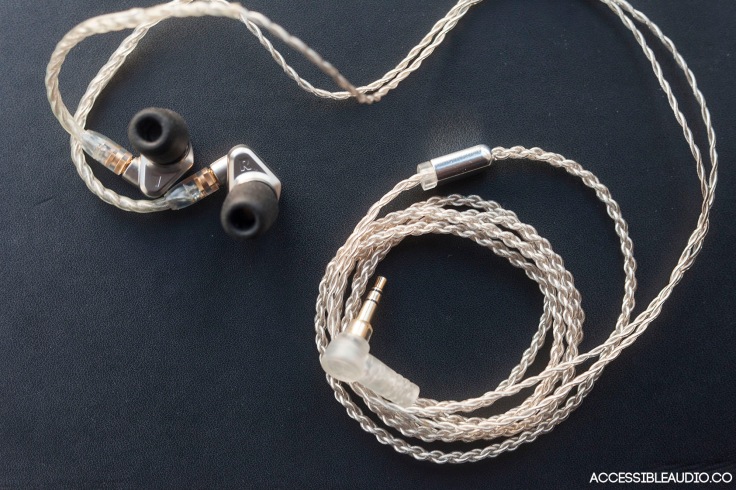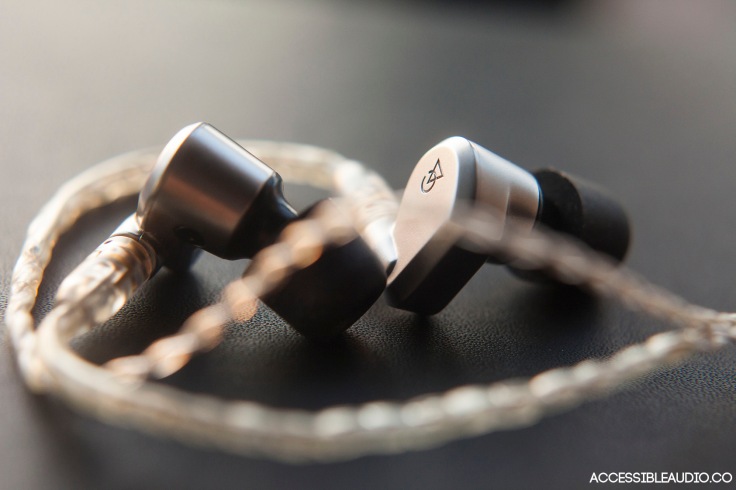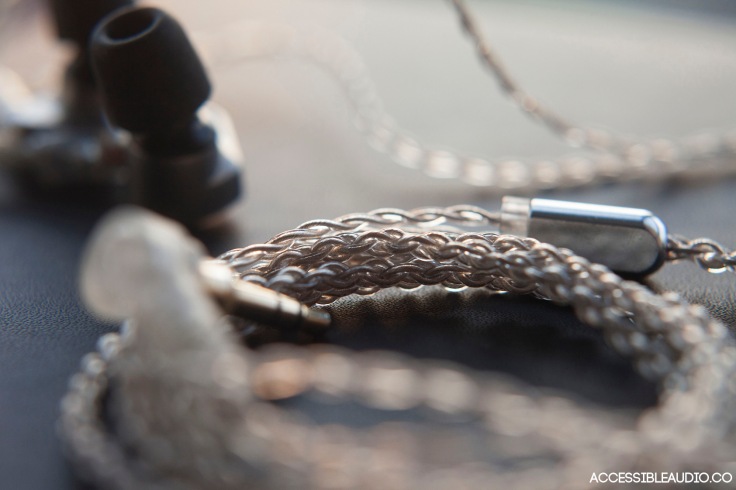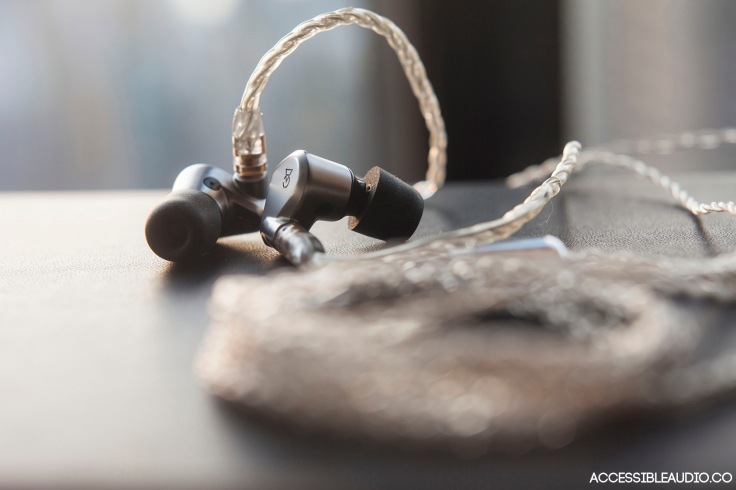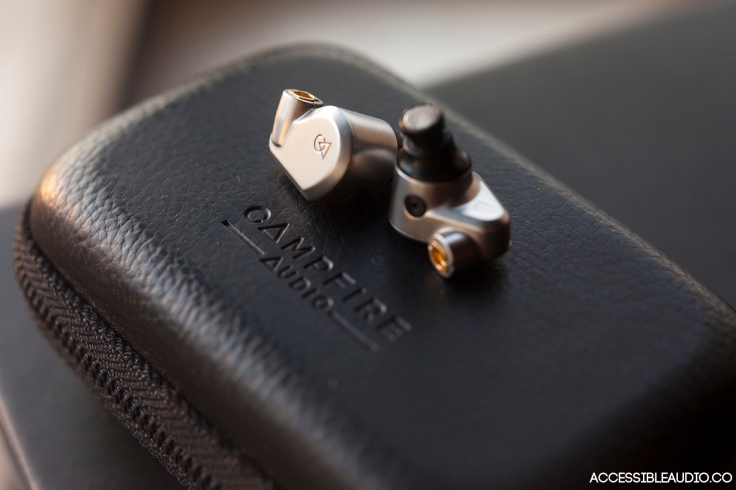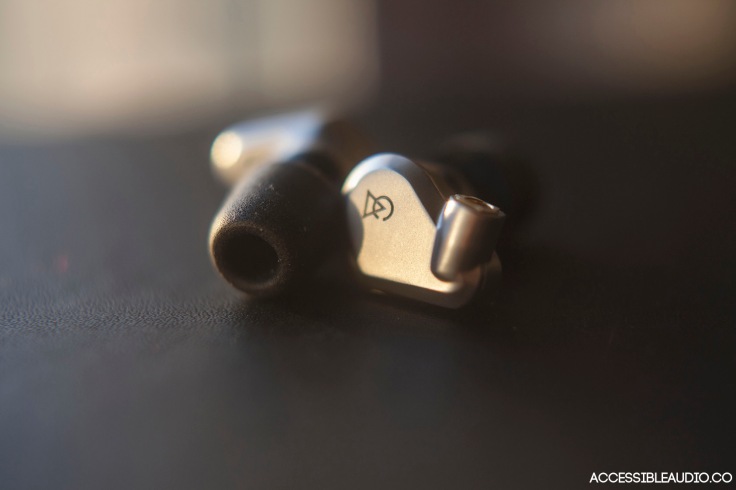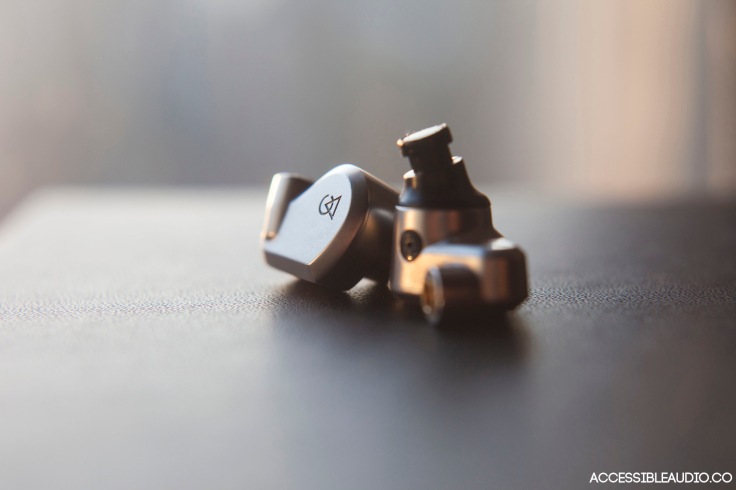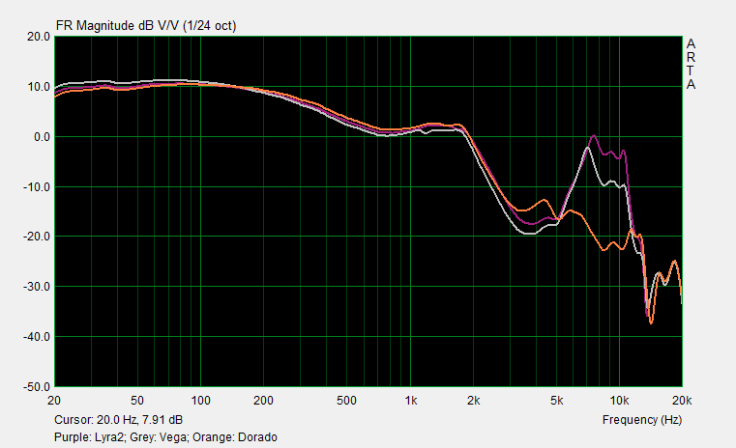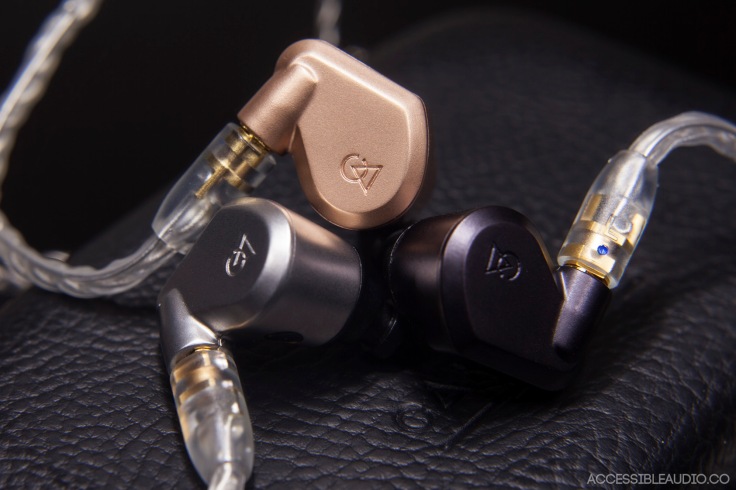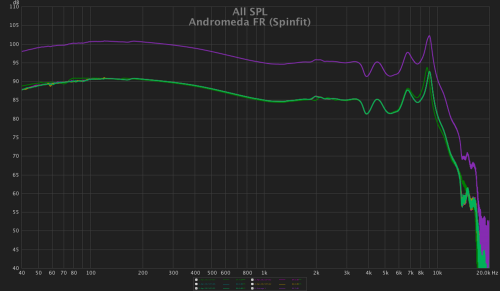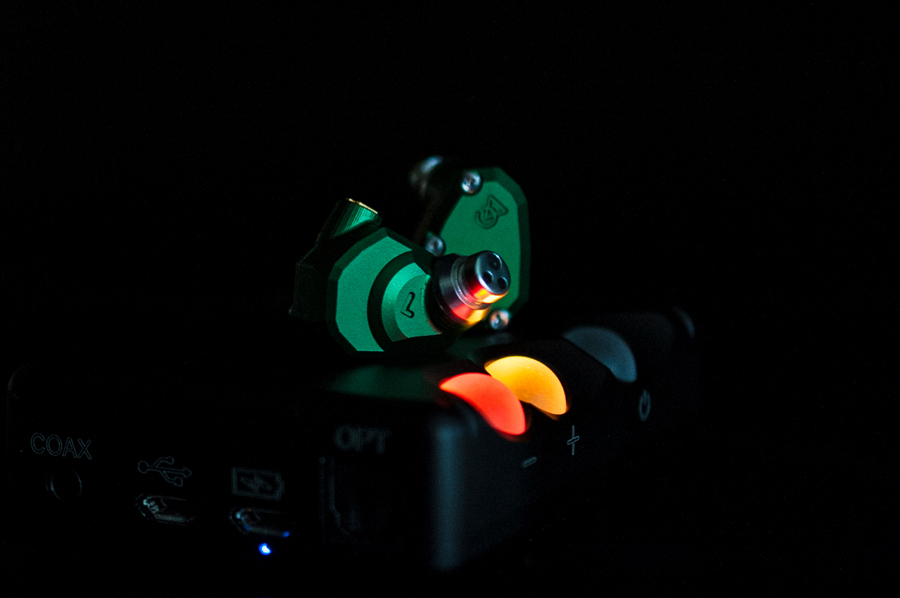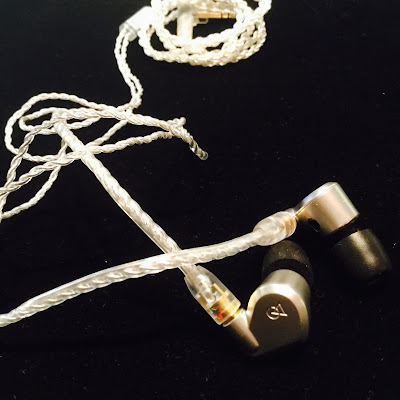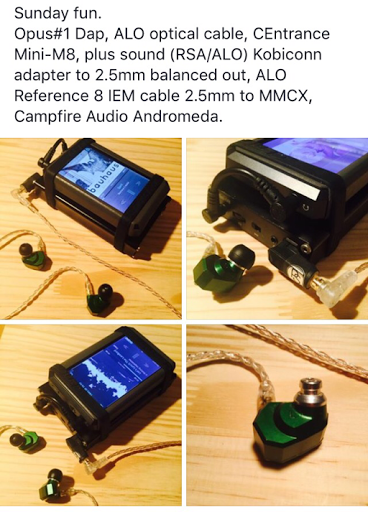At the time this review was written, the Campfire Vega was listed for sale on their website. Here is a link to their listing of the product:
https://campfireaudio.com/shop/vega/

Introduction
Anyone who knows me personally (or through Head-Fi) knows that one of my favorite in-ear monitors is the Campfire Andromeda. It’s still top five for me, which is quite an accomplishment considering it’s been almost two years since their release. Here is a link to the review:
https://www.head-fi.org/showcase/campfire-audio-andromeda.21533/reviews?page=2#review-16006
With earphones (particularly in-ear monitors) you don’t know what you’re getting into until you have an opportunity to try the product first hand. Sometimes I look at earphone prices and shake my head. During a time where “bang for your buck” products provide incredible price to performance ratios, it’s getting harder and harder for higher end companies to justify their quadruple-digit price tags.
I can jump online and buy a really decent sounding multiple driver hybrid earphone for under one hundred dollars. However, there are budget manufacturers who are ripping off higher end company’s designs and using deception to snipe consumer dollars. If you are involved in the Head-Fi community you might know why I’m mentioning it here. Don’t be fooled, my friends! Just because something looks like a Porsche, it doesn’t mean it’s going to be a Porsche, especially if it has a Honda Civic engine under the hood! If you want the real deal, don’t waste your money on impostors and most importantly don’t support the sale and promotion of knockoff products!
I don’t care if an earphone has one or twenty-five drivers in each channel or not. If I listen to listen to a twenty-five driver earphone and something sounds wonky, then put on a single driver earphone and everything sounds just right, you better believe I’m preferring the more enjoyable and natural sounding earphone!
So what is it that makes a thousand plus dollar earphone that much better? It’s not the complexity of the design or the number of drivers, IT’S THE BUILD AND SOUND. It’s the customer service and commitment to quality control and consistency. It’s innovation and design executed perfectly. Sadly, sometimes high end audio is more about brand name and hype, or marketing new technological jargon that isn’t nearly as revolutionary it says. When this happens lines are blurred. This makes buyers skeptical of high end audio. The risk to reward factor is increased exponentially as the price tag increases. There's nothing more frustrating than buying an expensive piece of audio gear, then finding a product that performs much better at half the cost.
Making world class earphones is an art form. Campfire Audio is an artist, and their specialty is shaping sound, installing it into a metal shell, placing a premium cable on it and letting the product speak for itself. Expensive? Yes. Outrageous? NO! Campfire brings it when it comes to the most important aspect of manufacturing and selling earphones, MAKING THE MUSIC ENJOYABLE.
When I checked out the Campfire Audio booth at Axpona earlier this year, I had a chance to check out their earphone, the Vega. Let’s go over them with a comprehensive review.
Disclaimer
I was given a loaner of the Vega in exchange for my honest opinion and review. I am in no way affiliated with Campfire Audio. I would like to take this time to personally thank the folks at Campfire for the opportunity to experience and review the product.
REVIEW
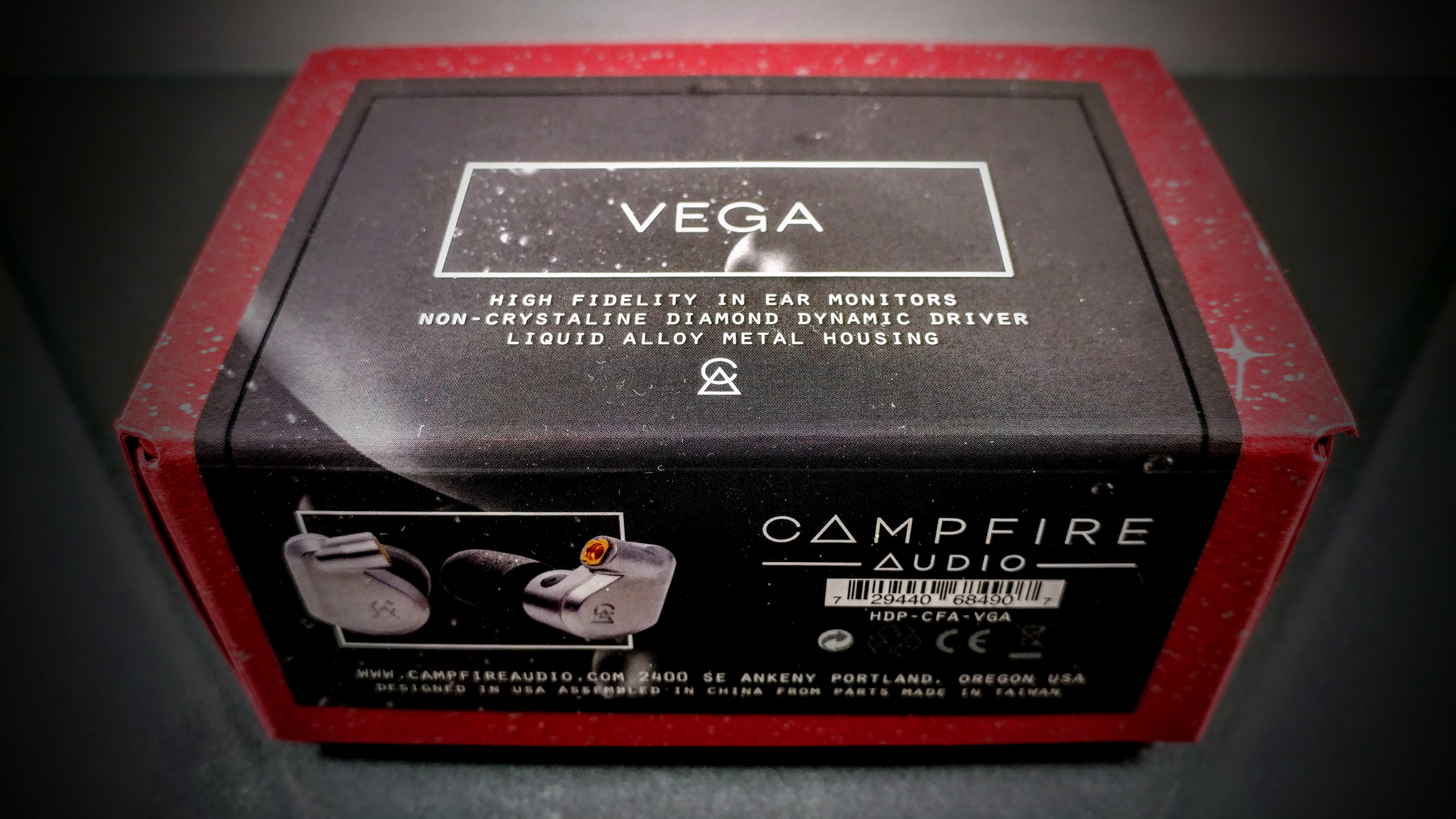
The Vega comes in a small red box reminiscent of Campfire’s previous releases. There’s really not a whole lot to say here.
Specifications and Accessories

Specifications
Driver: Amorphous Diamond Like Carbon Diaphragm Single Dynamic
Frequency Response: 5Hz–22 kHz
Sensitivity: 102 dB SPL/mW
Impedance: 17.5 Ohms @ 1kHz
Connections: Beryllium / Copper MMCX
Housing: Liquid Alloy Metal Shell
Campfire has a cutting edge driver technology under the hood. The diaphragm is made of diamonds, well, kind of… Here is a note from Campfire’s web page:
“A.D.L.C. Diaphragm
Campfire Audio is proud to be the first company to use a revolutionary breakthrough speaker technology implemented exclusively for in-ear monitors, a non-crystalline diamond dynamic driver.
Our revolutionary ADLC non-crystalline diamond-carbon material is sonically remarkable in our 8.5mm driver. The ADLC delivers stunning clarity, advanced micro detail, and dynamics.”
Accessories
1X Premium leather wool lined carrying case
2X Velvet drawstring bags (for storage of unused tips)
1X Set of Spinfit tips (S,M,L)
1X Set of memory foam tips (S,M,L)
1X Set of silicone wide bore tips (S,M,L)
1X Cleaning tool (brush and earwax removal tool)

The carrying case follows suit with all of Campfire’s releases and is one of the most premium case in earphones today. The thing looks more like a high end wallet than an earphone case.
Housings

Previous Campfire earphones featured machine milled housings which didn’t provide the most ideal fit. Some people reported issues with certain edges making contact with the user’s ears and causing minor irritation with long listening sessions. Campfire took notes and provided a new shell, made from a poured liquid alloy shell. The new metal shell has rounded edges and is more discreet. Kudos, Campfire!
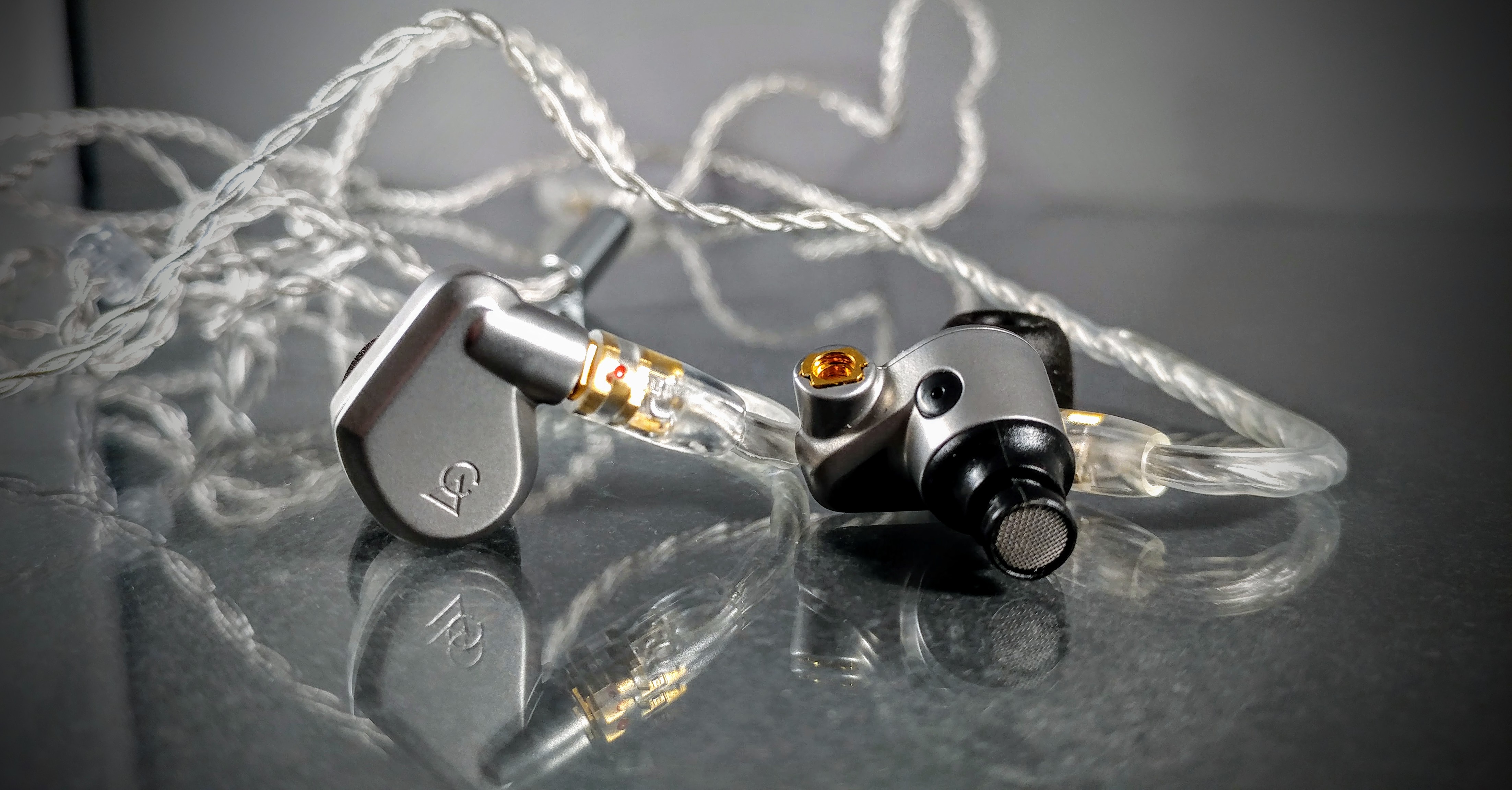
The all metal shell is about as solid as an earphone can be. As with all Campfire models, the Vega has a MMCX connection that I am told is sturdier than the average version of this application. I have used these for the last six months and can confirm the connection is very solid. I’ve had no issues connecting/disconnecting the cable over the course of using them as a daily driver.
Cable, Y-Split, Cable Jack, Strain Reliefs

If you’ve owned a previous Campfire earphone you’ll recognize this one. The Vega offers a Campfire version of the ALO Audio’s (Campfire’s parent company) Litz cable. It’s honestly one of the best stock cables I’ve ever seen both in terms of ergonomics and functionality. There’s nothing I would perceptibly do differently (maybe switch from the pliable memory wire to a shrink wrap version).
We’ll start from the bottom with the ninety degree angled gold plated 3.5 mm jack (thinned out at the base of the jacketing to accommodate various source/cases). Moving up to the wire, we have a silver litz four strand braided cable that leads to a metal Y-split with rubber/plastic chin slider that sits flush when not in use. The cable itself has virtually no spring and minimal memory. From the Y-split, a twisted two strand cable runs to each channel’s premium memory wire and MMCX connection. Although I am more of a fan of the shrink wire variation of memory wire, the more pliable and bendable memory wire works well with the Vega housing.
Would it have been a nice touch to add a microphone/remote option? Yes, but the quality of the stock cable allows me to overlook this much easier than I normally would. Rarely do you get a stock cable this nice in the package.
Functionality
Plug and play, buddy. Premium plug and play! However, aftermarket MMCX cables with microphone and remote can be found dirt cheap these days. There’s always that option if you so choose.
Ergonomics, Fit and Microphonics, Isolation

Although the housing shape didn’t promote a flush fit with my ears, I was able to get a decent fit and seal with the right pair of tips. In my case the included Spinfit tips worked excellent. Aftermarket tip options that worked well were RHA stock tips, Sony stock tips and JVC spiral dot tips. The rotating MMCX connection in combination with the bendable memory wire cable made seating the earphone easy to do. Add the adjustable chin/neck slider and microphonics are virtually non-existent.
Vega seals really well for a universal dynamic driver earphone, almost too well. You can’t shove these things in your ear and go. Doing so, I created vacuum/pressure/flex issues with the driver. If you experience this with your pair of Vega, equalize the pressure in your ear drum by lightly tugging the top of your ear upwards (which should break the airtight seal and relieve pressure on the driver). Using the lift/insert/drop method allowed my ears to create a good seal without creating pressure issues. Because of the excellent seal, the Vega isolates incredibly well for an in-ear monitor.
NOTE: Finding the perfect tip to form a union between this earphone and your ears is crucial. The tips you use will play a big part in your experience and impression of them. I strongly suggest you experiment with tips as much as possible to find the one tip that helps maximize sound quality.
For home music enjoyment, commuting and critical listening, the Vega fits well. However, I wouldn’t take these with me to the gym, or use them to go for a run for a couple reasons, #1 they aren’t the most secure fitting earphones for me, and there are options I can think of that are more ideal for this application (YMMV), and #2 the price of these would incline me to prevent from getting them sweaty and putting them in harm’s range (YMMV).
Sound Review
I did my demo with my usual gear. I used an LG-V20 and iPhone 6 for smartphone use, and either my Fiio X7, Aune M1S or iBasso DX80 DAP/Bushmaster D14 DAC/Amp for high fidelity portable use. For desktop use, I used my Toshiba Satellite Laptop in combination with a ifi micro iDSD playing at 32/192 kHz, or Aune S6/S7 combo. I tested them with several other sources as well. I used Google Music in its highest download quality (320 KBPS), and also streamed FLAC via Tidal streaming service. I also used purchased and downloaded tracks in MP3, FLAC, WAV and DSD. I make sure that any gear I test has sufficient playtime before writing a review.
I used my usual same songs for testing gear:
“Limit to your love” by James Blake (bass speed, punch, response)
“Doin’ it Right” by Daft Punk (sub bass)
“Get lucky” by Daft Punk (bass to midrange transition resolution, male vocals)
“Madness” by Muse (soundstage, separation)
“Some nights” by Fun (soundstage and male vocals)
“The soundmaker” by Rodrigo y Gabriela (texture and imaging)
“Bassically” by Tei Shi (bass to midrange resolution, female vocals)
“Skinny Love” performed by Birdie (female vocals, acoustic playback)
“One” by Ed Sheeran (male vocals, acoustic playback)
“Outlands” from the Tron Legacy Soundtrack (symphonic presentation, imaging)
“Sultans of swing” by Dire Straits (detail, separation, balance)
“And Justic for All” by Metallica (driver distortion, treble response, rock playback)
“Ten thousand fists” by Disturbed (driver distortion, treble response, rock playback)
Note: Other tracks were used, but the listed songs were primarily used to assess and break down the gear’s response.
Source Selection
Coming in at 17.5 Ohm and 102dB of sensitivity, the Vega is easy to drive. You can use your smartphone as your source and enjoy them thoroughly, but they will also scale incredibly well with better sources. These earphones sound magical with my Fiio X7/AM3 combo, and borderline legendary with a balanced cable and connection. The iFi micro iDSD rocked the snot out of the Vega as well.
While I feel the Vega is pretty universal in terms of portable source matching, it has a richness in tone that matches better with a leaner, more airy and detailed sounding sources. Desktop rigs are overkill. If you want to maximize sound quality from the Vega, use them with your best portable sources, amplifiers and music files. You will be rewarded in doing so.
Sound Signature
The Vega sounds incredibly organic and spacious while still having a prominent lower frequency range and fatigue free upper frequency range. This tuning in combination with virtually zero distortion and high resolution makes it elite, period. Dare I say (based on the products I’ve experienced) this is the greatest “basshead audiophile” earphone on the planet? If not the best it’s currently one of them, and a whole lot more than just this.
Long story short, Vega has an “it” factor that sets it apart from much of what’s currently offered nowadays. The Vega combines a level of warmth, richness and resolution that makes you want to listen to it more and more, and sets itself apart from other earphones in this regard.
There are some who might not like warmth and bass presence of the Vega. Those who prefer the leaner and brighter sound of something like an Etymotic ER4 or Hifiman RE-XX might be turned off by the robust nature of this earphone. For everyone else this thing kicks butt!
To my ears, the Vega sounds like really well tuned top of the line bass forward closed full sized headphone. There is a downward tilt from lower to higher frequencies, all while offering incredible resolution and adequate sparkle.
Bass
The first thing I said after I first listened to them was “wow, this thing kicks like a mule!”
The Vega bass presence is powerful, dynamic and responsive all at the same time. Looking at a home measurement, it’s definitely the most prominent part of Vega’s tuning. At the same time, it’s by no means overbearing or obtrusive to the rest of the sound, and a big reason why I find this earphone to be elite.
Sub bass is big, bold and has no problems with tone. Sub bass rumble is there in spades. The perceived depth goes to the limit of my hearing ability. Attack and decay is solid for a dynamic driver, but not as tight as a balanced armature earphone. Listening to Daft Punk’s “Doin it Right” I was wowed by not only the raw power and command of the song’s bass line, I was also taken back by the amount of clarity these things maintain with the vast quantities of bass.
Although the Bass response is pretty even, a downward tilt begins at mid-bass regions. Vega’s sub-bass response is slightly more prominent than its mid-bass presence. This downward tilt is done without losing losing the earphone’s sense of balance.
All in all the bass is big, bold and beautiful. Fans of big bass and warm tilted earphones the likes of the Noble 6 and 1More triple driver will be enamored by what’s going on here. This headphone's bass digs deep and responds like no other in-ear monitor I’ve heard. Kick drums thump, and synthesized bass lines sound flat out awesome. This will most likely be one of, if not the #1 summit-fi earphone for bassheads all around the world.
Midrange
Dare I say natural, slightly warm, resolving and spacious all at the same time? Usually these words are hard to put together when describing an in-ear monitor, but Campfire has accomplished just that. The previously mentioned downward slope continues into lower and upper midrange tones. Despite this entire range taking a step down from the bold bass forwardness, there’s adequate timbre and texture, thanks to the resolving nature of this earphone. Male vocals sound very natural and never appeared overly weighted to my ears.
Moving to upper mids things get even more relaxed. These earphones are far from shouty. The most important thing I can do with this review is make sure you don’t get the impression that these things are overly warm or bloated, because although what I’m describing here might lead you to think this, the resolving nature sways me from that impression. Although this range is relaxed (especially compared to how many other manufacturers are tuning their products nowadays), the clarity and separation makes it very relevant and very, very enjoyable. I’m occasionally taken back by how a tuning like this can also sound so organic and natural with this much bass.
Treble
I’m going to sound like a broken record here…
Treble is highly resolving with great separation and a natural and spacious feel. To add to this, extension is great and there’s just the right amount of sparkle to make cymbal crashes and hi-hats sound relaxed but also very realistic (and not harsh whatsoever). Vega doesn't make a mess of sibilant reocrdings, even at loud volumes. There’s quite a big variance between bass tones and treble sounds, but the consistency of resolution makes this uniquely awesome. Treble definitely does take the back seat, but it fits nicely with the rest of this earphones sound. I love turning the dial up a few extra dB with the Vega because of this. It seems to make the tuning sound that much more natural and engaging.
Soundstage and Imaging
The visceral impact and low end extension gives these a tremendous sense of depth. Take into account the slightly relaxed, extended and clear highs, and the soundstage of the Vega is massive from what I hear. Imaging is not the best with bassy modern genres, but live recordings and rock music yields a great sense of instrument placement. This earphone is definitely top ten in this criteria.
Comparisons

Campfire Andromeda ($1099 USD on Campfire’s website)
Similarly priced is Vega’s co-flagship earphone is the five armature driver Andromeda. I LOVE this earphone, as it hits a sweet spot for me in terms of tonal balance and clarity. I’m happy I am comparing these two because it gives me an opportunity to listen to them again!
Comparing the two, Andromeda is definitely the leaner and brighter sounding earphone of the two. Tonally speaking the Andromeda is a more even response, but I can’t say it’s the more natural sounding earphone (depending on music genres and listen volumes) because of the cohesiveness, clarity and separation Vega has. I give these earphones a draw in this regard.
In terms of bass, Vega perceptually has a lot more bass, digs deeper and makes the Andromeda seem lean in comparison. Mid-range tones are leaner and a bit cleaner with Andromeda. Treble is brighter with Andromeda. At low volumes I prefer the more forward presentation of the Andromeda. At louder volumes Vega’s treble gets a decisive advantage.
Soundstage goes to the vega, but I give a slight advantage to Andromeda in terms of imaging.
Both of these earphones are world class in terms of clarity and separation of sounds.
Andromeda is a far more source dependent earphone. Vega scales better and is more universal in terms of source matching.
I’m not going to put one earphone ahead of the other. They are both world class tunings that actually complement each other very well. Andromeda puts on a clinic in terms of tonal balance and crispness (with the right source). Vega puts on a world class bass performance and scales better. Vega provides the listener with a combination of music enjoyment and resolution that is seldom heard from an earphone with this tuning. Airy and balanced? Andromeda. World class basshead audiophile? Vega!
Fit goes to the Vega. They made improvements in their shell design and it will work better for most people. Build quality and accessories is a draw. They offer a virtually identical accessories. Packaging and the cables are pretty much the same.
Noble Katana ($1850 USD on Noble’s website)
The Katana is a world class nine armature driver earphone that seemingly gets better and better the more I listen to it. To be completely honest, the sound is similar to that of the Andromeda but with a touch more musicality.
Comparing the Katana to the Vega, the differences are much similar to my Vega/Andromeda comparison. Vega is really, really bassy compared to the Katana. The Vega is more of a musical and rumbling bass as compared to the more punchy nature of the Katana. Midrange clarity and resolution goes to the Katana. Treble is more relaxed and equally extended with both earphones.
Preference depends on the volumes used for each earphone. Katana sounds better at moderate volumes and satisfies the palate of one looking for a more airy, balanced and articulate presentation. Vega sounds better at larger volumes and is geared to satisfy my inner bass-head audiophile.
Accessories goes to the Katana. The waterproof Pelican case and larger assortment of tips is a bit better, although the included Spinfit tips of the Vega is a nicer set than any tip Noble offers in their package. Build quality is a draw. I like the housing of the Katana more, but prefer the cable of the Vega over the stock Noble option.
Conclusion (TLDR)

Over the years my preferences have grown towards a more even and accurate tuning, the main reason being because warmer and bassier earphones seem to lose out in terms of clarity, separation and soundstage. Campfire has dispelled that stereotype with the Vega. This is one of the few earphones on the planet that can bring this much low end to the table and still maintain a spacious, natural and organic presentation at the same time.
Vega’s bass robust and has tremendous extension. The low end is outrageously good for an in-ear monitor. They take the term “basshead audiophile” and emphasize both words with this product. The tuning is unique in a really, really good way. I honestly haven’t heard an earphone with this much bass maintain a level of resolution, clarity and sound stage like this. The tuning is different from what I often see at this price tag, but I love what Campfire has done. Add the fact that these earphones scale incredibly well, This earphone will rank very high on my list of all time favorites.
I don’t think this earphone will be for everyone. If you’re looking for lean and technical sound, you should probably look somewhere else. However, if you’re looking for an earphone that will bring the boom, with just the right amount of sparkle to make any genre of music sound great, I implore you to give these a demo.
When rating a product I have to take all criteria into account. The Vega gets 4 stars for fit and ergonomics (minus a star for driver venting/pressure issues), 5 stars for design and build quality, and 4.5-5 stars for sound quality (+/- a half star because there’s going to be a small number of people who feel these have too much bass). Campfire has brought to market an earphone that is innovative, creative, unique and unlike most of what exists today. I applaud Campfire for this product. It brings diversity to their lineup, compliments the co-flagship Andromeda, and raises the bar on how good a single dynamic driver earphone with this tuning can perform.
If you ask me what the best performing bass forward in-ear monitor is, without hesitation I’m going to tell you it’s the Campfire Vega. Until I hear something better, I’m giving it the title of best basshead audiophile earphone on the planet.
Thanks for reading and happy listening,
Hisoundfi
https://campfireaudio.com/shop/vega/

Introduction
Anyone who knows me personally (or through Head-Fi) knows that one of my favorite in-ear monitors is the Campfire Andromeda. It’s still top five for me, which is quite an accomplishment considering it’s been almost two years since their release. Here is a link to the review:
https://www.head-fi.org/showcase/campfire-audio-andromeda.21533/reviews?page=2#review-16006
With earphones (particularly in-ear monitors) you don’t know what you’re getting into until you have an opportunity to try the product first hand. Sometimes I look at earphone prices and shake my head. During a time where “bang for your buck” products provide incredible price to performance ratios, it’s getting harder and harder for higher end companies to justify their quadruple-digit price tags.
I can jump online and buy a really decent sounding multiple driver hybrid earphone for under one hundred dollars. However, there are budget manufacturers who are ripping off higher end company’s designs and using deception to snipe consumer dollars. If you are involved in the Head-Fi community you might know why I’m mentioning it here. Don’t be fooled, my friends! Just because something looks like a Porsche, it doesn’t mean it’s going to be a Porsche, especially if it has a Honda Civic engine under the hood! If you want the real deal, don’t waste your money on impostors and most importantly don’t support the sale and promotion of knockoff products!
I don’t care if an earphone has one or twenty-five drivers in each channel or not. If I listen to listen to a twenty-five driver earphone and something sounds wonky, then put on a single driver earphone and everything sounds just right, you better believe I’m preferring the more enjoyable and natural sounding earphone!
So what is it that makes a thousand plus dollar earphone that much better? It’s not the complexity of the design or the number of drivers, IT’S THE BUILD AND SOUND. It’s the customer service and commitment to quality control and consistency. It’s innovation and design executed perfectly. Sadly, sometimes high end audio is more about brand name and hype, or marketing new technological jargon that isn’t nearly as revolutionary it says. When this happens lines are blurred. This makes buyers skeptical of high end audio. The risk to reward factor is increased exponentially as the price tag increases. There's nothing more frustrating than buying an expensive piece of audio gear, then finding a product that performs much better at half the cost.
Making world class earphones is an art form. Campfire Audio is an artist, and their specialty is shaping sound, installing it into a metal shell, placing a premium cable on it and letting the product speak for itself. Expensive? Yes. Outrageous? NO! Campfire brings it when it comes to the most important aspect of manufacturing and selling earphones, MAKING THE MUSIC ENJOYABLE.
When I checked out the Campfire Audio booth at Axpona earlier this year, I had a chance to check out their earphone, the Vega. Let’s go over them with a comprehensive review.
Disclaimer
I was given a loaner of the Vega in exchange for my honest opinion and review. I am in no way affiliated with Campfire Audio. I would like to take this time to personally thank the folks at Campfire for the opportunity to experience and review the product.
REVIEW

The Vega comes in a small red box reminiscent of Campfire’s previous releases. There’s really not a whole lot to say here.
Specifications and Accessories

Specifications
Driver: Amorphous Diamond Like Carbon Diaphragm Single Dynamic
Frequency Response: 5Hz–22 kHz
Sensitivity: 102 dB SPL/mW
Impedance: 17.5 Ohms @ 1kHz
Connections: Beryllium / Copper MMCX
Housing: Liquid Alloy Metal Shell
Campfire has a cutting edge driver technology under the hood. The diaphragm is made of diamonds, well, kind of… Here is a note from Campfire’s web page:
“A.D.L.C. Diaphragm
Campfire Audio is proud to be the first company to use a revolutionary breakthrough speaker technology implemented exclusively for in-ear monitors, a non-crystalline diamond dynamic driver.
Our revolutionary ADLC non-crystalline diamond-carbon material is sonically remarkable in our 8.5mm driver. The ADLC delivers stunning clarity, advanced micro detail, and dynamics.”
Accessories
1X Premium leather wool lined carrying case
2X Velvet drawstring bags (for storage of unused tips)
1X Set of Spinfit tips (S,M,L)
1X Set of memory foam tips (S,M,L)
1X Set of silicone wide bore tips (S,M,L)
1X Cleaning tool (brush and earwax removal tool)

The carrying case follows suit with all of Campfire’s releases and is one of the most premium case in earphones today. The thing looks more like a high end wallet than an earphone case.
Housings

Previous Campfire earphones featured machine milled housings which didn’t provide the most ideal fit. Some people reported issues with certain edges making contact with the user’s ears and causing minor irritation with long listening sessions. Campfire took notes and provided a new shell, made from a poured liquid alloy shell. The new metal shell has rounded edges and is more discreet. Kudos, Campfire!

The all metal shell is about as solid as an earphone can be. As with all Campfire models, the Vega has a MMCX connection that I am told is sturdier than the average version of this application. I have used these for the last six months and can confirm the connection is very solid. I’ve had no issues connecting/disconnecting the cable over the course of using them as a daily driver.
Cable, Y-Split, Cable Jack, Strain Reliefs

If you’ve owned a previous Campfire earphone you’ll recognize this one. The Vega offers a Campfire version of the ALO Audio’s (Campfire’s parent company) Litz cable. It’s honestly one of the best stock cables I’ve ever seen both in terms of ergonomics and functionality. There’s nothing I would perceptibly do differently (maybe switch from the pliable memory wire to a shrink wrap version).
We’ll start from the bottom with the ninety degree angled gold plated 3.5 mm jack (thinned out at the base of the jacketing to accommodate various source/cases). Moving up to the wire, we have a silver litz four strand braided cable that leads to a metal Y-split with rubber/plastic chin slider that sits flush when not in use. The cable itself has virtually no spring and minimal memory. From the Y-split, a twisted two strand cable runs to each channel’s premium memory wire and MMCX connection. Although I am more of a fan of the shrink wire variation of memory wire, the more pliable and bendable memory wire works well with the Vega housing.
Would it have been a nice touch to add a microphone/remote option? Yes, but the quality of the stock cable allows me to overlook this much easier than I normally would. Rarely do you get a stock cable this nice in the package.
Functionality
Plug and play, buddy. Premium plug and play! However, aftermarket MMCX cables with microphone and remote can be found dirt cheap these days. There’s always that option if you so choose.
Ergonomics, Fit and Microphonics, Isolation

Although the housing shape didn’t promote a flush fit with my ears, I was able to get a decent fit and seal with the right pair of tips. In my case the included Spinfit tips worked excellent. Aftermarket tip options that worked well were RHA stock tips, Sony stock tips and JVC spiral dot tips. The rotating MMCX connection in combination with the bendable memory wire cable made seating the earphone easy to do. Add the adjustable chin/neck slider and microphonics are virtually non-existent.
Vega seals really well for a universal dynamic driver earphone, almost too well. You can’t shove these things in your ear and go. Doing so, I created vacuum/pressure/flex issues with the driver. If you experience this with your pair of Vega, equalize the pressure in your ear drum by lightly tugging the top of your ear upwards (which should break the airtight seal and relieve pressure on the driver). Using the lift/insert/drop method allowed my ears to create a good seal without creating pressure issues. Because of the excellent seal, the Vega isolates incredibly well for an in-ear monitor.
NOTE: Finding the perfect tip to form a union between this earphone and your ears is crucial. The tips you use will play a big part in your experience and impression of them. I strongly suggest you experiment with tips as much as possible to find the one tip that helps maximize sound quality.
For home music enjoyment, commuting and critical listening, the Vega fits well. However, I wouldn’t take these with me to the gym, or use them to go for a run for a couple reasons, #1 they aren’t the most secure fitting earphones for me, and there are options I can think of that are more ideal for this application (YMMV), and #2 the price of these would incline me to prevent from getting them sweaty and putting them in harm’s range (YMMV).
Sound Review
I did my demo with my usual gear. I used an LG-V20 and iPhone 6 for smartphone use, and either my Fiio X7, Aune M1S or iBasso DX80 DAP/Bushmaster D14 DAC/Amp for high fidelity portable use. For desktop use, I used my Toshiba Satellite Laptop in combination with a ifi micro iDSD playing at 32/192 kHz, or Aune S6/S7 combo. I tested them with several other sources as well. I used Google Music in its highest download quality (320 KBPS), and also streamed FLAC via Tidal streaming service. I also used purchased and downloaded tracks in MP3, FLAC, WAV and DSD. I make sure that any gear I test has sufficient playtime before writing a review.
I used my usual same songs for testing gear:
“Limit to your love” by James Blake (bass speed, punch, response)
“Doin’ it Right” by Daft Punk (sub bass)
“Get lucky” by Daft Punk (bass to midrange transition resolution, male vocals)
“Madness” by Muse (soundstage, separation)
“Some nights” by Fun (soundstage and male vocals)
“The soundmaker” by Rodrigo y Gabriela (texture and imaging)
“Bassically” by Tei Shi (bass to midrange resolution, female vocals)
“Skinny Love” performed by Birdie (female vocals, acoustic playback)
“One” by Ed Sheeran (male vocals, acoustic playback)
“Outlands” from the Tron Legacy Soundtrack (symphonic presentation, imaging)
“Sultans of swing” by Dire Straits (detail, separation, balance)
“And Justic for All” by Metallica (driver distortion, treble response, rock playback)
“Ten thousand fists” by Disturbed (driver distortion, treble response, rock playback)
Note: Other tracks were used, but the listed songs were primarily used to assess and break down the gear’s response.
Source Selection
Coming in at 17.5 Ohm and 102dB of sensitivity, the Vega is easy to drive. You can use your smartphone as your source and enjoy them thoroughly, but they will also scale incredibly well with better sources. These earphones sound magical with my Fiio X7/AM3 combo, and borderline legendary with a balanced cable and connection. The iFi micro iDSD rocked the snot out of the Vega as well.
While I feel the Vega is pretty universal in terms of portable source matching, it has a richness in tone that matches better with a leaner, more airy and detailed sounding sources. Desktop rigs are overkill. If you want to maximize sound quality from the Vega, use them with your best portable sources, amplifiers and music files. You will be rewarded in doing so.
Sound Signature
The Vega sounds incredibly organic and spacious while still having a prominent lower frequency range and fatigue free upper frequency range. This tuning in combination with virtually zero distortion and high resolution makes it elite, period. Dare I say (based on the products I’ve experienced) this is the greatest “basshead audiophile” earphone on the planet? If not the best it’s currently one of them, and a whole lot more than just this.
Long story short, Vega has an “it” factor that sets it apart from much of what’s currently offered nowadays. The Vega combines a level of warmth, richness and resolution that makes you want to listen to it more and more, and sets itself apart from other earphones in this regard.
There are some who might not like warmth and bass presence of the Vega. Those who prefer the leaner and brighter sound of something like an Etymotic ER4 or Hifiman RE-XX might be turned off by the robust nature of this earphone. For everyone else this thing kicks butt!
To my ears, the Vega sounds like really well tuned top of the line bass forward closed full sized headphone. There is a downward tilt from lower to higher frequencies, all while offering incredible resolution and adequate sparkle.
Bass
The first thing I said after I first listened to them was “wow, this thing kicks like a mule!”
The Vega bass presence is powerful, dynamic and responsive all at the same time. Looking at a home measurement, it’s definitely the most prominent part of Vega’s tuning. At the same time, it’s by no means overbearing or obtrusive to the rest of the sound, and a big reason why I find this earphone to be elite.
Sub bass is big, bold and has no problems with tone. Sub bass rumble is there in spades. The perceived depth goes to the limit of my hearing ability. Attack and decay is solid for a dynamic driver, but not as tight as a balanced armature earphone. Listening to Daft Punk’s “Doin it Right” I was wowed by not only the raw power and command of the song’s bass line, I was also taken back by the amount of clarity these things maintain with the vast quantities of bass.
Although the Bass response is pretty even, a downward tilt begins at mid-bass regions. Vega’s sub-bass response is slightly more prominent than its mid-bass presence. This downward tilt is done without losing losing the earphone’s sense of balance.
All in all the bass is big, bold and beautiful. Fans of big bass and warm tilted earphones the likes of the Noble 6 and 1More triple driver will be enamored by what’s going on here. This headphone's bass digs deep and responds like no other in-ear monitor I’ve heard. Kick drums thump, and synthesized bass lines sound flat out awesome. This will most likely be one of, if not the #1 summit-fi earphone for bassheads all around the world.
Midrange
Dare I say natural, slightly warm, resolving and spacious all at the same time? Usually these words are hard to put together when describing an in-ear monitor, but Campfire has accomplished just that. The previously mentioned downward slope continues into lower and upper midrange tones. Despite this entire range taking a step down from the bold bass forwardness, there’s adequate timbre and texture, thanks to the resolving nature of this earphone. Male vocals sound very natural and never appeared overly weighted to my ears.
Moving to upper mids things get even more relaxed. These earphones are far from shouty. The most important thing I can do with this review is make sure you don’t get the impression that these things are overly warm or bloated, because although what I’m describing here might lead you to think this, the resolving nature sways me from that impression. Although this range is relaxed (especially compared to how many other manufacturers are tuning their products nowadays), the clarity and separation makes it very relevant and very, very enjoyable. I’m occasionally taken back by how a tuning like this can also sound so organic and natural with this much bass.
Treble
I’m going to sound like a broken record here…
Treble is highly resolving with great separation and a natural and spacious feel. To add to this, extension is great and there’s just the right amount of sparkle to make cymbal crashes and hi-hats sound relaxed but also very realistic (and not harsh whatsoever). Vega doesn't make a mess of sibilant reocrdings, even at loud volumes. There’s quite a big variance between bass tones and treble sounds, but the consistency of resolution makes this uniquely awesome. Treble definitely does take the back seat, but it fits nicely with the rest of this earphones sound. I love turning the dial up a few extra dB with the Vega because of this. It seems to make the tuning sound that much more natural and engaging.
Soundstage and Imaging
The visceral impact and low end extension gives these a tremendous sense of depth. Take into account the slightly relaxed, extended and clear highs, and the soundstage of the Vega is massive from what I hear. Imaging is not the best with bassy modern genres, but live recordings and rock music yields a great sense of instrument placement. This earphone is definitely top ten in this criteria.
Comparisons

Campfire Andromeda ($1099 USD on Campfire’s website)
Similarly priced is Vega’s co-flagship earphone is the five armature driver Andromeda. I LOVE this earphone, as it hits a sweet spot for me in terms of tonal balance and clarity. I’m happy I am comparing these two because it gives me an opportunity to listen to them again!
Comparing the two, Andromeda is definitely the leaner and brighter sounding earphone of the two. Tonally speaking the Andromeda is a more even response, but I can’t say it’s the more natural sounding earphone (depending on music genres and listen volumes) because of the cohesiveness, clarity and separation Vega has. I give these earphones a draw in this regard.
In terms of bass, Vega perceptually has a lot more bass, digs deeper and makes the Andromeda seem lean in comparison. Mid-range tones are leaner and a bit cleaner with Andromeda. Treble is brighter with Andromeda. At low volumes I prefer the more forward presentation of the Andromeda. At louder volumes Vega’s treble gets a decisive advantage.
Soundstage goes to the vega, but I give a slight advantage to Andromeda in terms of imaging.
Both of these earphones are world class in terms of clarity and separation of sounds.
Andromeda is a far more source dependent earphone. Vega scales better and is more universal in terms of source matching.
I’m not going to put one earphone ahead of the other. They are both world class tunings that actually complement each other very well. Andromeda puts on a clinic in terms of tonal balance and crispness (with the right source). Vega puts on a world class bass performance and scales better. Vega provides the listener with a combination of music enjoyment and resolution that is seldom heard from an earphone with this tuning. Airy and balanced? Andromeda. World class basshead audiophile? Vega!
Fit goes to the Vega. They made improvements in their shell design and it will work better for most people. Build quality and accessories is a draw. They offer a virtually identical accessories. Packaging and the cables are pretty much the same.
Noble Katana ($1850 USD on Noble’s website)
The Katana is a world class nine armature driver earphone that seemingly gets better and better the more I listen to it. To be completely honest, the sound is similar to that of the Andromeda but with a touch more musicality.
Comparing the Katana to the Vega, the differences are much similar to my Vega/Andromeda comparison. Vega is really, really bassy compared to the Katana. The Vega is more of a musical and rumbling bass as compared to the more punchy nature of the Katana. Midrange clarity and resolution goes to the Katana. Treble is more relaxed and equally extended with both earphones.
Preference depends on the volumes used for each earphone. Katana sounds better at moderate volumes and satisfies the palate of one looking for a more airy, balanced and articulate presentation. Vega sounds better at larger volumes and is geared to satisfy my inner bass-head audiophile.
Accessories goes to the Katana. The waterproof Pelican case and larger assortment of tips is a bit better, although the included Spinfit tips of the Vega is a nicer set than any tip Noble offers in their package. Build quality is a draw. I like the housing of the Katana more, but prefer the cable of the Vega over the stock Noble option.
Conclusion (TLDR)

Over the years my preferences have grown towards a more even and accurate tuning, the main reason being because warmer and bassier earphones seem to lose out in terms of clarity, separation and soundstage. Campfire has dispelled that stereotype with the Vega. This is one of the few earphones on the planet that can bring this much low end to the table and still maintain a spacious, natural and organic presentation at the same time.
Vega’s bass robust and has tremendous extension. The low end is outrageously good for an in-ear monitor. They take the term “basshead audiophile” and emphasize both words with this product. The tuning is unique in a really, really good way. I honestly haven’t heard an earphone with this much bass maintain a level of resolution, clarity and sound stage like this. The tuning is different from what I often see at this price tag, but I love what Campfire has done. Add the fact that these earphones scale incredibly well, This earphone will rank very high on my list of all time favorites.
I don’t think this earphone will be for everyone. If you’re looking for lean and technical sound, you should probably look somewhere else. However, if you’re looking for an earphone that will bring the boom, with just the right amount of sparkle to make any genre of music sound great, I implore you to give these a demo.
When rating a product I have to take all criteria into account. The Vega gets 4 stars for fit and ergonomics (minus a star for driver venting/pressure issues), 5 stars for design and build quality, and 4.5-5 stars for sound quality (+/- a half star because there’s going to be a small number of people who feel these have too much bass). Campfire has brought to market an earphone that is innovative, creative, unique and unlike most of what exists today. I applaud Campfire for this product. It brings diversity to their lineup, compliments the co-flagship Andromeda, and raises the bar on how good a single dynamic driver earphone with this tuning can perform.
If you ask me what the best performing bass forward in-ear monitor is, without hesitation I’m going to tell you it’s the Campfire Vega. Until I hear something better, I’m giving it the title of best basshead audiophile earphone on the planet.
Thanks for reading and happy listening,
Hisoundfi

